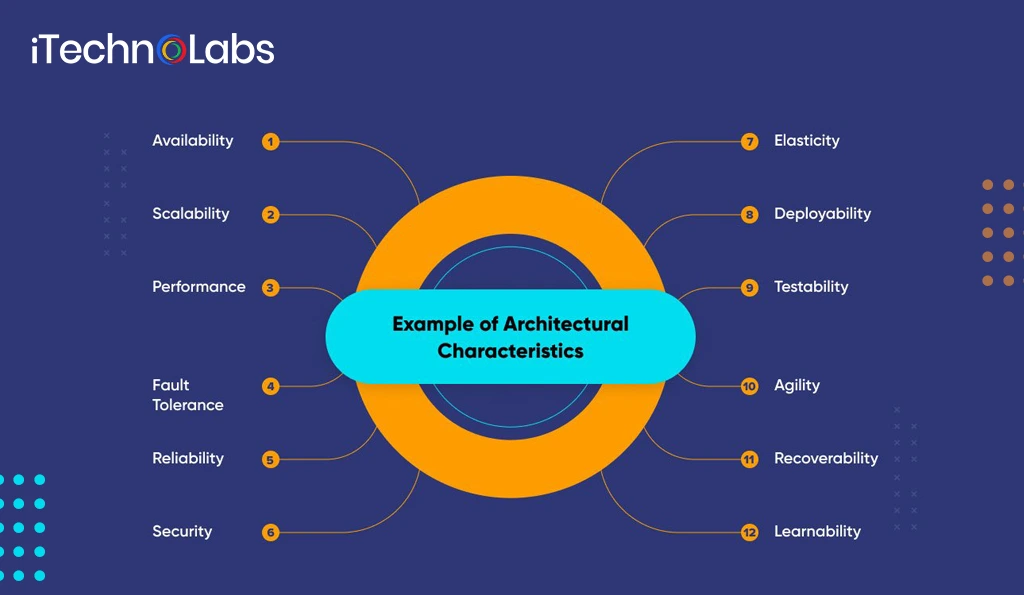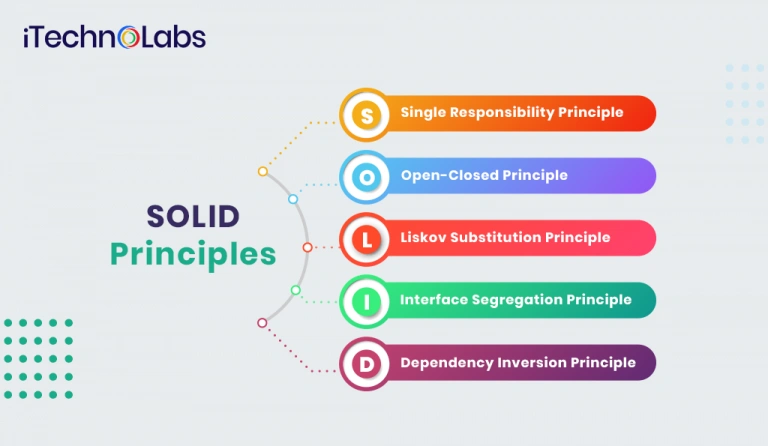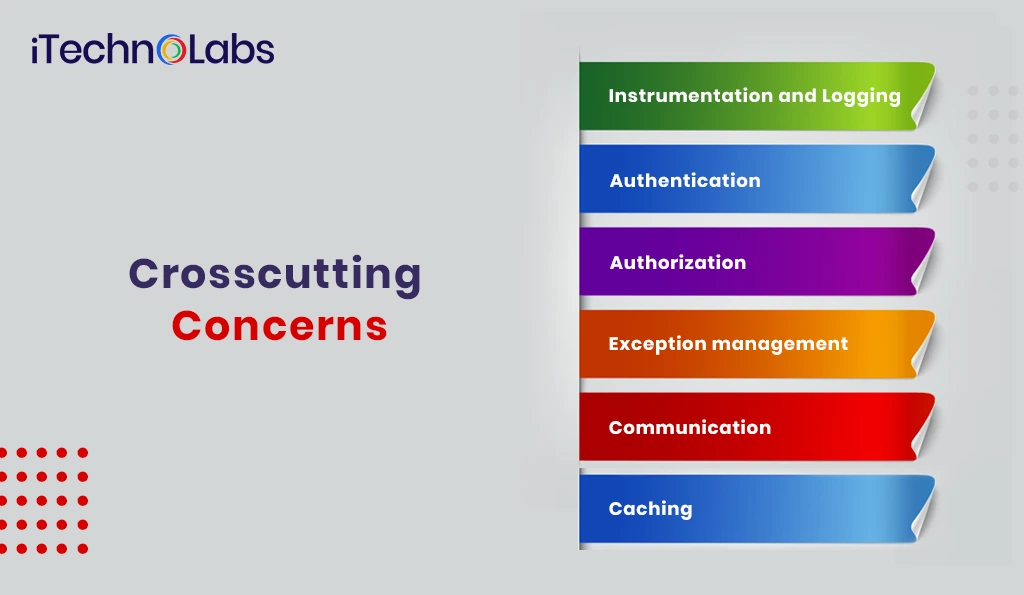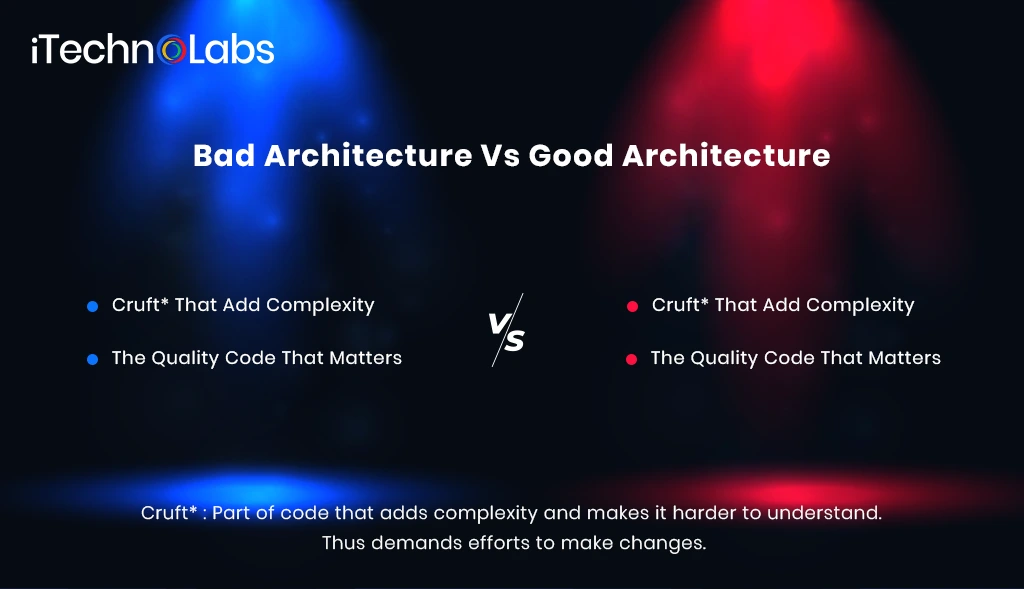The architecture of any software project lays the foundation for success. Architecture defines technical standards, design, delivery, and support standards for a software product. When designing software architecture, a good software development company keeps in mind the development and technology goals and ensures everything is logical, scalable, and cost-effective.
What is Software Architecture?
The ability to view architecture from many different perspectives is a critical skill for an architect working in a software development company. Each perspective alone might not be enough, but when combined, they create a broader picture. The standpoints included in this category are principles, standards, patterns and anti-patterns, rules of thumb, and empirical practices that are crucial for decision-making in a particular direction and evaluating the success of the project.
In addition to understanding technical standards like platforms, technologies, and infrastructure, software architects play a key role in designing the architecture of a system. Software Architecture Services support this role by offering structured approaches and best practices. Ultimately, their analysis contributes directly to defining the product, perfecting the design, delivering the product on time at an affordable price, and providing lifetime support. Therefore, a software development company has a firm grasp of the client’s technology goals and their business needs. A successful software project requires software architects to follow a number of basic guidelines, rules, and principles. In this article, we’ll discuss five key principles of software architecture services that should never be overlooked.
Core Software Architecture Principles for Building Scalable and Maintainable Systems
1. SOLID Principles
A software development company must follow a set of principles known as SOLID when working on Object-Oriented Programming System (OOPS) projects. Robert C. Martin introduced these five principles in his paper Design Principles and Design Patterns. They are essential to object-oriented design and architecture. The SOLID principles aim to make software design more understandable, boost scalability, and facilitate maintenance.
These are the underlying principles of SOLID:
- S. Single Responsibility Principle: Every module or class should only have responsibility for a single functionality. As outlined in the original principle, responsibility is a “reason to change,” and each class should have only one such reason.
- O. Open-Closed Principle: Basically, the open-closed principle states that all software entities should be open to enhancements and extensions without having to be modified or altered. The concept of polymorphism in OOPS is similar to this.
- L. Liskov Substitution Principle: Defining each derived class as a replacement for its base class is stated in this principle. The following example is given to make this concept understandable. An object of type A may be substituted for an object of type B if A is a subclass of B. In other words, it means that the software program’s objects can be replaced with examples of subtypes without interfering with the code.
- I. Interface Segregation Principle: Keeping this principle in mind is one of the most important things you can do to increase efficiency. According to it, existing interfaces should not be augmented by the addition of new methods. Each interface should cater to a particular client, and each class must implement several interfaces.
- D. Dependency Inversion Principle: According to this principle, high-level modules should never rely on low-level modules. Each module should be independent of the other. Also, abstractions should not rely on details, but details should be based on abstractions. Following this principle, one can introduce an interface abstraction to avoid dependencies between high-level and low-level modules.
The architecture of a system is also guided by SOLID principles. SOLID combines all five principles to provide a scalable, adaptable, testable, and reusable software solution to the software development company.
2. The ‘Least’ Principles
To manage various aspects of software development projects, the software development company uses these principles to focus on the less is more or minimalism philosophy. “Least” principles include the following:
The Principle of Least Astonishment: According to this principle, when a sufficiently knowledgeable person encounters a solution or approach for the first time (the audience may vary, for example, end-users, programmers, testers, etc.), it should not surprise them. The principle, also known as the principle of least surprise, aims to reduce the learning curve used by users when using a module by leveraging existing knowledge. Hence, anything with a high level of unpredictability is a good candidate for redesign. Each element of the architecture is subject to it, from naming services to visualizations of user interfaces to the domain model.
The Principle of Least Effort: This principle, commonly called Zipf’s Law, was developed to reflect basic human behavior: People tend to follow as effortless paths as possible. In other words, if a software development company follows a certain pattern in their design, the developers assigned to the project will follow the same pattern unless there is a significantly easier way to accomplish the task. Or, to take this a step further, once the current solution is satisfactory, it does not need to be improved immediately. Thus, putting the right architecture in place from the start is essential: it sets high expectations and ensures there will not be any quality compromises throughout the project’s lifecycle. One of the greatest benefits of this principle is that it can be applied to multiple systems: once we create the right design, we can build an architectural framework that serves as the basis for the next system we build. By establishing a future-proof template, we can guarantee success for the software systems of the software development company.
3. The Principles of ‘Economics’
Making the most of an opportunity and delaying making decisions are two principles that share a common theme under the principles of economics.
The principle of opportunity cost: We place a value on every choice we make. Costs and benefits are two perspectives on value. A choice’s opportunity cost is the sacrifice we make to obtain it. The best economical choice is the one that will benefit us the most but with the lowest cost. This is the essence of architecture: evaluating options against each other and deciding which one will add the most value to the project. It is a very common dichotomy to decide whether to create a tactical solution with a shorter time to market or a more strategic solution, which is more expensive today but can be leveraged in future projects, enabling the cost to be minimized later on.
The following points are considered in the software development company:
- What is the time available for the analysis/evaluation of the architectural design? Imagine coming up with multiple solutions! Finding even one solution is hard enough.
- Where are the products going in the next year or two? What projects are in the works? Is there any potential for synergy?
- Identify the system quality attributes in your organization that are most important and describe how the proposed solution will compromise them.
- What other stakeholders will affect the decision, other than the architecture team? Which stakeholders have the most important objectives? What are your plans to resolve conflicting needs?
The Cost of Delay Principle or the Last Responsible Moment: According to this principle, no major decision or action should be delayed until it is absolutely necessary in the software development company. Using this principle, developers can understand all the main alternatives and broaden their perspectives on making decisions. Some claim that this principle can result in risks. You can still follow this principle by demonstrating to stakeholders the advantages of delaying a decision and the benefits of another option by building proofs of concept (PoCs).
4. Crosscutting Concerns
In your application, cross-cutting concerns are key areas of design that aren’t specific to one layer. In the software development company, these key points are always kept in mind by the developers to ensure the success of the software.
- Instrumentation and Logging: All business-critical and system-critical events should be measured, and sufficient details should be recorded in the system to recreate events without adding sensitive information.
- Authentication: The method by which users can authenticate themselves and pass their authenticated identities to a protected system must be defined.
- Authorization: Establish a division of authority within each layer, as well as across trust boundaries.
- Exception management: An exception handling system focuses on two aspects: catching exceptions at functional, physical, and logical boundaries. The second component is preventing users from seeing sensitive information.
- Communication: Use proper protocols to protect sensitive data from crossing the network and minimize network calls.
Caching: Identifying what should be cached and where to cache requires consideration of Web farm and application farm issues. Using this, a software development company improves the responsiveness and performance of the application.
5. Don’t repeat yourself (DRY)
A concept should not be specified in more than one place within an application. In this case, errors will be a frequent occurrence. One instance of this behavior is likely to fail to be updated, which will cause erratic behavior. Eventually, this behavior will have to change due to a change in requirements.
Put logic into a coding construct rather than repeating it. All parts of the applications that require this behavior should use this construct as the sole authority.
In software architecture, the above design principles provide guidance and provide a good framework for any software development company. In some cases, however, this principle may not be applicable in its pure form, so always keep in mind the context in which software is being developed before deciding which version of the software architecture principles to apply.
It takes just a few time-tested software architecture principles to build a modern software system, and that list keeps growing with cloud and other modern technologies. A software development company focuses on architecting secure, reliable, highly efficient, and cost-effective software systems.
Suggested Article: How To Hire A Developer For A Project In 2025
Software Architecture Design Principles
Abstraction:
All modern software engineering techniques are involved mainly with the exploitation of various kinds of abstractions. Such a high-level approach is known as object-oriented software design. Utilizing abstractions, the high-level constructs allow developers to hide away exactly those very detailed and unnecessary coding and complexities unless absolutely required to look into them. Principles of abstraction-oriented design help remove redundant data and speed up the development cycle while improving the quality of the output in general that is being programmed.
Refinement:
In software development, refinement means the process of breaking up large and complex systems into smaller and more understandable pieces. It has advantages like thorough understanding of system complexities, and they can be overcome, which eventually reduces the time taken for developing software and improves overall productivity. The process also supports easy debugging, maintainability, and scalability of the software systems.
Modularity:
Modularity refers to the design principle of a software system in such a way that the system is split into modules or independent components. This makes it easier to change and add elements while allowing for code reuse and scalability. It forces developers to break down a system into modular parts so that they can concentrate on just one specific thing at any given time when developing.
Patterns:
Software patterns refer to known solutions to common problems that are encountered during software development. Such patterns help standardize the design process and give developers a less laborious approach to solving complex problems in computer systems. The inclusion of these established patterns in their designs would save time and effort while retaining high quality in their software systems.
Data Protection:
Data protection refers to the protection of sensitive and valuable data in software systems. It ensures data is safe, with sufficient encryption, access controls, and regular backup, against unauthorized access or loss. Data protection maintains the trust of the users and prevents legal implications.
Refactoring:
Refactoring is essentially a code restructuring technique that does not alter the external behavior of the code. It allows developers to enhance the internal design, readability, and performance of their code without any additional features or functionality introduced to their code. This helps in keeping the code base clean and efficient, making it easier to maintain and scale large and complex software systems over time.
Testing:
Software testing is the means of proper functionality, reliability, and security of a system through systematic evaluation. Testing prevents certain potential issues from emerging in operational environments if bugs are identified and corrected at an early stage of development. Testing further serves as good input for developers to ensure and improve quality with continuous refinement and improvement.
Types of Software Architecture
There are several software architectures, all of which have their own strengths and weaknesses and are well suited to different project requirements and objectives.
Some common software architecture types are:
1. Monolithic architecture: This software architecture is the old-school way of bundling all code and functionality together into one project. In short, it’s hard to maintain big projects.
2. Microservice architecture: It reduces the system into much smaller, independent services, which can intercommunicate with each other. This enhances the scalability and the fault tolerance of a system.
3. Event-driven architecture: An event-driven architecture is designed so that it responds to events that occur in the system. It really makes an architecture flexible and scalable but also implementable, which could be quite complex and challenging.
Conclusion:
Mastering the foundational principles of software development architecture is essential for building scalable, secure, and maintainable systems. Whether it’s adhering to SOLID principles, applying economic reasoning to design decisions, or ensuring consistency through DRY and crosscutting concerns, each principle plays a critical role in shaping a robust architecture.
As modern software development architecture systems grow in complexity, adopting a principled approach allows teams to reduce technical debt, improve collaboration, and future-proof their applications. While no single principle fits all scenarios, a thoughtful combination—tailored to the project’s context and business goals—can significantly enhance development efficiency and product quality.
By understanding and applying these core software development architecture principles, developers and architects can lay a strong foundation for long-term success in an ever-evolving technology landscape.
Also, read: Top 10 Emerging Mobile App Development Technologies for 2025
FAQs:
1. What are the 5 principles of software design?
The five principles of software design, often referred to as the SOLID principles, include: Single Responsibility, Open-Closed, Liskov Substitution, Interface Segregation, and Dependency Inversion. These principles help create software that is scalable, maintainable, testable, and adaptable—key qualities for any robust software architecture.
2. What are the 7 principles of software engineering?
While not always fixed, commonly accepted software engineering principles include SOLID, DRY (Don’t Repeat Yourself), the Principle of Least Astonishment, Modularity, Abstraction, Refactoring, and Crosscutting Concerns. Together, these guide engineers in writing clean, efficient, and scalable code while ensuring long-term maintainability and flexibility of the software system.
3. What are the 4 principles of software engineering?
A focused set of four core principles includes Abstraction, Modularity, Refinement, and separation of Concerns. These help developers break down complex systems, promote code reuse, improve maintainability, and isolate functionalities for better design clarity and scalability, as discussed in the architecture design section of the blog.
4. What are the five key concepts of software architecture?
The five key concepts of software architecture highlighted in the blog are SOLID principles, Least principles (Effort & Astonishment), Economic principles (Opportunity Cost & Cost of Delay), Crosscutting Concerns (like logging and security), and DRY. These principles guide developers in designing reliable, scalable, and maintainable systems.
5. What are the principles of software architecture design?
Software architecture design principles include Abstraction, Refinement, Modularity, Use of Patterns, Data Protection, Refactoring, and Testing. These ensure a clean structure, enhance system performance, support easy debugging, and lead to a better user experience, aligning with modern software development goals.


















